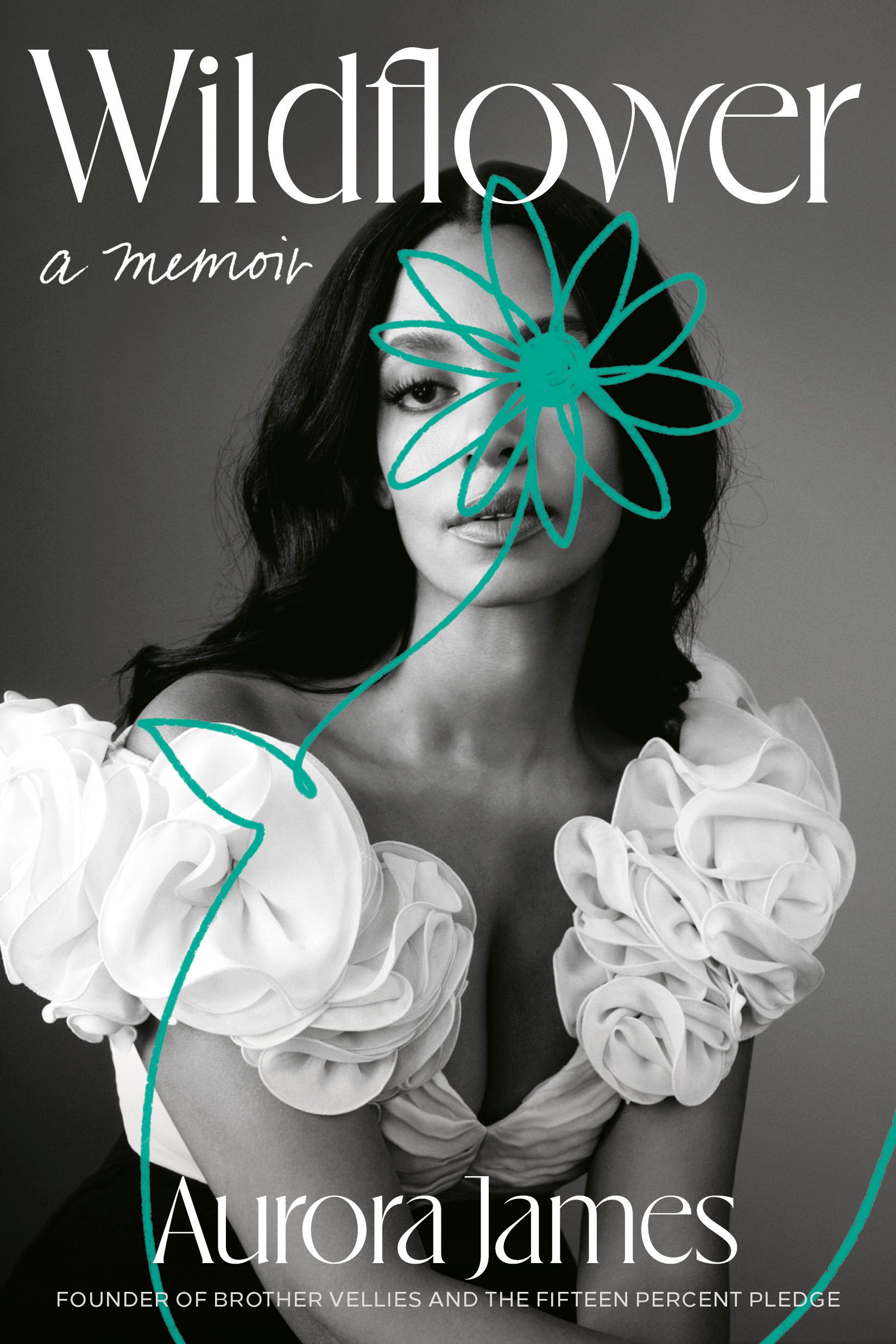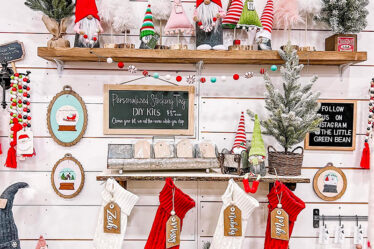
The feedback I got within twenty-four hours of my first post about the Fifteen Percent Pledge, challenging companies to dedicate 15 percent of their shelf space to Black businesses, was overwhelmingly positive. People were excited to see a task assigned to major retailers that could have a positive impact on Black entrepreneurs and businesses. The connection between racial justice and Black-owned businesses was not part of the conversation at that time. The biggest complaint I got was from some people who said this was racist — that shelf space should go to the best brands, not just Black brands. My argument was that right now shelf space was not going to the best brands; it was going to the best funded or most well-connected brands.
Other folks wondered if there were enough Black-owned businesses to make the Pledge’s proposition possible. Even some of my close friends felt that way, which I understood. But I had a friend who had been supporting Black businesses for years and for years, and whenever I’d walk around Bed-Stuy with Sinclair, he’d point to different shops and announce, “Black owned, Black owned.” He always reminded me that it was important to support local Black-owned businesses. And I understood that I needed to make this the main focus of my ask.
By Sunday afternoon, celebrities like Reese Witherspoon, Vanessa Hudgens, Megan Rapinoe, Jessica Alba and Erykah Badu had shared my first post and explained why they thought it was important to their followers. At the same time, friends and colleagues reached out through different channels offering help.
Sophia Amoruso also got in touch as did Rachelle Hruska, the media entrepreneur and founder of Lingua Franca. Jenne Lombardo, the creator of Milk, and the designer Rebecca Minkoff sent notes offering to help start a database of Black-owned businesses. I immediately put all five of them in a group text. I knew that the first thing we needed was a comprehensive list so people would know where to shop, and retailers could start understanding the market. These ladies were my secret Charlie’s Angels: they helped get the Pledge off the ground. They were all white women, and this was intentional because I knew my Black friends were exhausted. Many of them did not have the emotional capacity to have these arduous conversations at this moment. And most of these white women have never had to have them at all.
On Monday, I decided to officially call the organization the Fifteen Percent Pledge and launched our website that same day which included a petition that people could sign asking major retailers to dedicate 15 percent of their shelf space to Black businesses. Most people had not yet made the connection between business and racial justice. I realized that they could not understand the financial implications of systemic racism on Black entrepreneurs until we really started hitting them with data. So my friend Mona Chalabi created graphics to help illustrate the most pressing issues to share on @15percentpledge.
To be honest, it was incredibly uncomfortable to make that first post because I knew a lot of people at the companies I had tagged. But I did not feel like I was calling them out, I was summoning them in. I tagged companies I believed could do this and would do a good job and would create impact. It is easier to sit quietly at the table than to flip it on its side. Tagging Sephora was especially risky as I had been working with them for about three years on a collaboration to make travel makeup bags in Mexico. I hoped it would be Brother Vellies’ foray into beauty products. The following Monday, I was on Zoom for our office’s daily check-in, when an employee said: “There goes our collaboration.”
It was not that she disagreed with the post, it was more that she imagined there’d be a blowback. This was a tough one as I had spent many years making sure that everything was zipped up properly. To go rogue was risky. But my community was also at risk, and there were too many people who could potentially stand to make big gains if the Pledge worked. I felt it was worth it.
On Tuesday, Blakely Vaughn, Sephora’s senior director of external communications, and the person who agreed to sponsor the very first Brother Vellies show, called.
“What exactly are you asking us to do?” she said, a hint of urgency in her voice.
I explained my thoughts on the intersection between racial and economic justice, how you could not have one without the other.
“Black entrepreneurs do not just happen to be ‘under-represented,’” I said calmly and with compassion. “We have been historically excluded. And Sephora, like every major retailer in this country, is guilty.”
I heard her sharp inhale. This was not an easy conversation.
“We are all responsible for upholding a corporate structure that is inherently racist,” I continued. “Blakely, you are guilty. And I am too.”
In her silence, I could sense that she was carefully considering my every word.
“We are all guilty but ultimately, the system is to blame,” I added. “And this is our opportunity to begin rewiring it for the better.”
“I’m listening,” she said. I could feel the wheels turning.
“I believe that Sephora should carry the best beauty products possible, and right now you are not,” I explained. “It is easier for retailers to buy from huge conglomerates than it is to take a chance on a new brand founded by a person who looks nothing like the profile of a successful entrepreneur the media has painted for us. People of color want to be able to come into your store and buy products made by people who look like us and therefore understand us. This is not just the right thing to do, I can promise you it is also phenomenal business.”
“Where would we even begin?” she finally asked.
“Take stock,” I said, my heart racing. This conversation could have gone a myriad of ways, but Blakely seemed to understand the proposition. “How many products does Sephora carry that are made by a Black-owned business?”
“We can get that number,” she said.
I had been flooded with texts, emails, and DMs from retailers, big and small, wanting to know how they could participate, and I was scheduling over a dozen calls a day. I realized getting the key information out there was paramount, and I wanted to empower people to start doing the work. I also knew that if we were transparent about our work together, it would provide a road map for others to follow.
On June 3, I made a second post that read:
“Black-owned businesses are the heart and soul of our communities, and they are closing right before our eyes at a rapid pace. They are the most vulnerable and have received the least amount of economic support. All while businesses like Whole Foods, Target, and Walmart thrive. Economic Equality means enacting real change. Taking the @15percentpledge is ONE thing retailers can do to help.
I am calling on businesses of all sorts and consumers to look at this economic pledge in three parts:
One: Auditing and taking stock of where you are at. Look at your existing shelves, hangers, boardrooms, and receipts. How many Black-owned businesses are you buying? How many Black women are in your C-Suite? Do that work.
Two: Take ownership of where you’re at — ideally publicly. Maybe only 2% of your staff is black, 1% of your content, whatever it is just own it. Accept it. Take accountability.
Three: Commit to growth. What is your strategy to get to a minimum of 15% and how do you plan to be held accountable?
I am not saying this is easy. I’m saying this is necessary.
That evening, at 5:34 p.m., I got a text that read:
“Hey Aurora: It is Jenn Hyman from Rent the Runway. I just sent you our RTR audit and goals. Take a look and let me know what you think. We hope it makes you proud.”
I had never met Jenn, so this was a terrific surprise.
“Hi, Jenn!” I replied. “I am very excited about this. Can we talk this evening? Also, are you okay with me sharing the work you did internally? I want everyone working with me to see how incredible this is.”
She wrote back immediately: “Yes for both.”
Rent the Runway is the fifth largest purchaser of clothing in America, and Jenn is the company’s co-founder and CEO. We got on the phone that night, and in the days that followed, devised a strategy to get to 15 percent.
What we all must realize about change is that stumbling is evidence of momentum.
In Jenn I immediately recognized a kindred spirit. She was also the first CEO I encountered who admitted that she didn’t know how to talk about race in a boardroom, that she had never had to.
To do this work, language is essential. Race is an incredibly complex issue in America that we have not been given the tools to unpack, so we wind up using overly simplistic vocabulary to discuss extremely complicated and nuanced issues. I credit my relationship with my grandmother for my ability to have conversations with people who are defensive or ignorant or simply inexperienced. I understand that a lot of this is determined by how you were raised and how you think about the world. There are not enough conversations happening around race in the first place, so there has been little opportunity for people to practice, which makes talking about big picture issues uncomfortable, let alone the nitty gritty details. And given the overarching fear from people about “cancellation,” CEOs are often terrified to make a wrong move and suffer blowback. That leads to paralysis. What we all must realize about change is that stumbling is evidence of momentum.
In the days that followed, people continued to call and text me, wanting to help, including a woman whose handle was @skjelse, a Brother Vellies customer. I posted on Instagram stories “a volunteer is working on the @shopbop numbers. They have a lot of brands, we need to determine how many, if any, are Black. Please msg her directly so you guys can do this together. WHITE WOMEN, please consider taking this on.”
It was challenging in the beginning to decipher what companies were Black owned; a lot of brands are fronted by a Black celebrity but not actually owned by them. Our metric to qualify as “Black owned” meant 51 percent or more. “Black partnered” (30 to 50 percent) meant if two or three friends started a business, at least one person was Black. “Black founded” was classified as brands originally founded by Black people who had taken a lot of investment and significantly diluted their equity, or had subsequently sold them, such as Shea Moisture. And while each was important, we knew that focusing on “Black owned” brands would be the most beneficial for the Black community.
By the end of the week, we had tallies on almost a dozen retailers. The volunteers were a mix of people across the country with no common denominator other than a desire to help, doing crucial work: researching websites, looking at every single brand that a company offered, and then figuring out how many of them were Black owned, versus founded, partnered, or fronted. Some, I learned, worked at the corporate level of the retailers we were investigating.
“Angels are everywhere,” @skjelse wrote me in a text.
She was mine.
Ten days after I launched the Pledge, I got on a Zoom with a dozen people from Sephora who wanted to discuss what it would entail for the company to take the Pledge. Blakely was on, as was Artemis Patrick, the chief merchandising officer and a few other senior leaders. They had been tracking all the posts I made and had questions.
“Where you are sitting in this exact moment in time affords you the power to change the course of history,” I said. “We are all humans above and beyond whatever job we have right now. Sephora is one of the most influential retailers in the world. What you do, others will follow.”
We began that conversation by discussing the barriers to entry that have made it next to impossible for Sephora to work with more Black-owned businesses. One example I shared was how different brands have to pay for display placement on the end of the aisles, and each cost thousands per store.
“Who can afford that?” I asked. “Not someone without access to capital.”
I could see nods of agreement and the lightbulbs going off around our virtual table.
That was when Artemis, their CMO, said, “We are going to do this together, right?”
“One hundred percent,” I said.
Then it dawned on me.
“I just want you guys to take a moment and acknowledge that it’s only women on this call.”
I looked around that virtual room at the women’s faces, square by square, all calling in from home where we each had been for over thirteen weeks now. I don’t think there was a dry eye on that call.
Artemis said, “We’re in.”
Aurora James is the creative director and founder of the luxury accessories brand Brother Vellies, founder of the Fifteen Percent Pledge and vice chair of the Council of Fashion Designers of America. Wildflower: A Memoir by Aurora James is published by Crown, an imprint of Penguin Random House. Available May 9, 2023.



